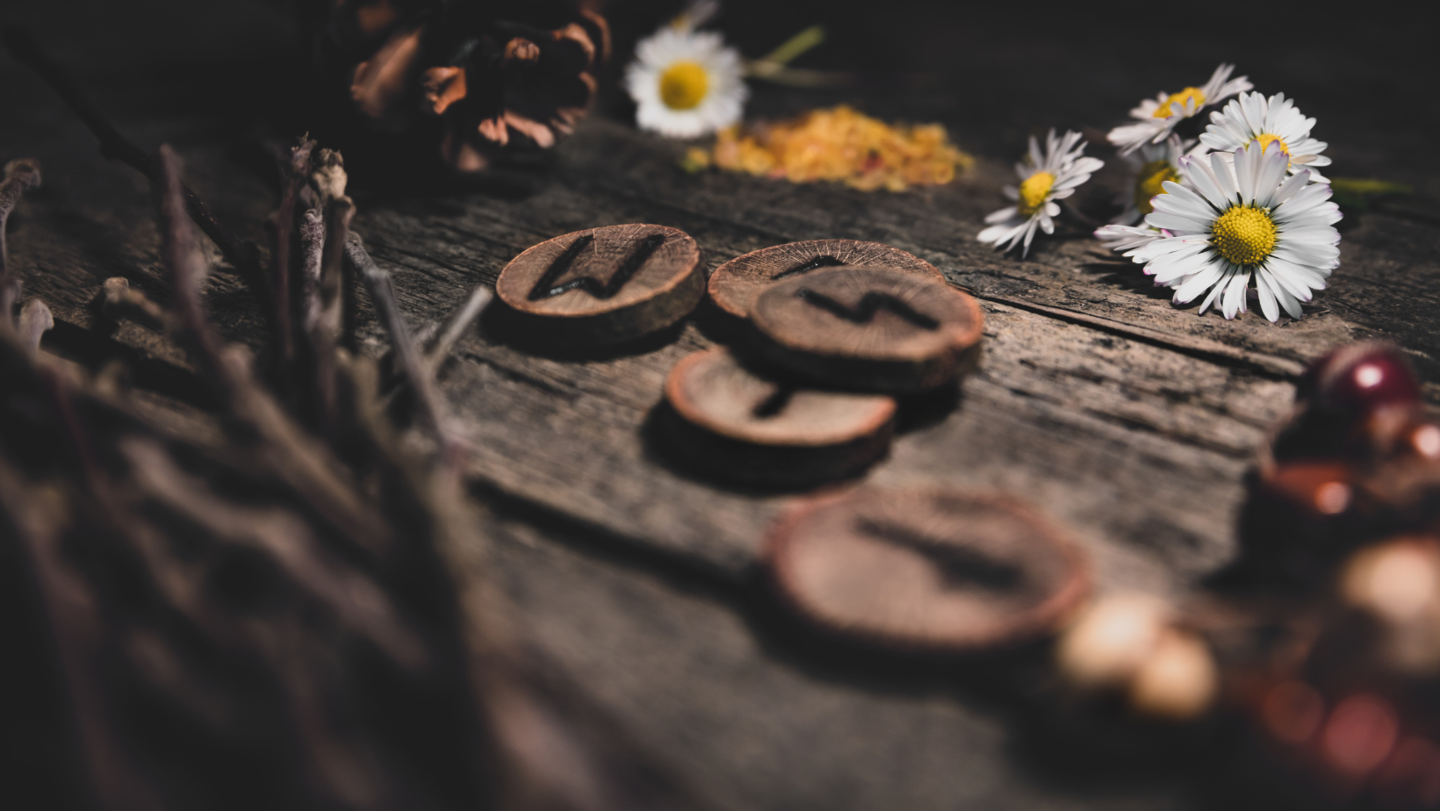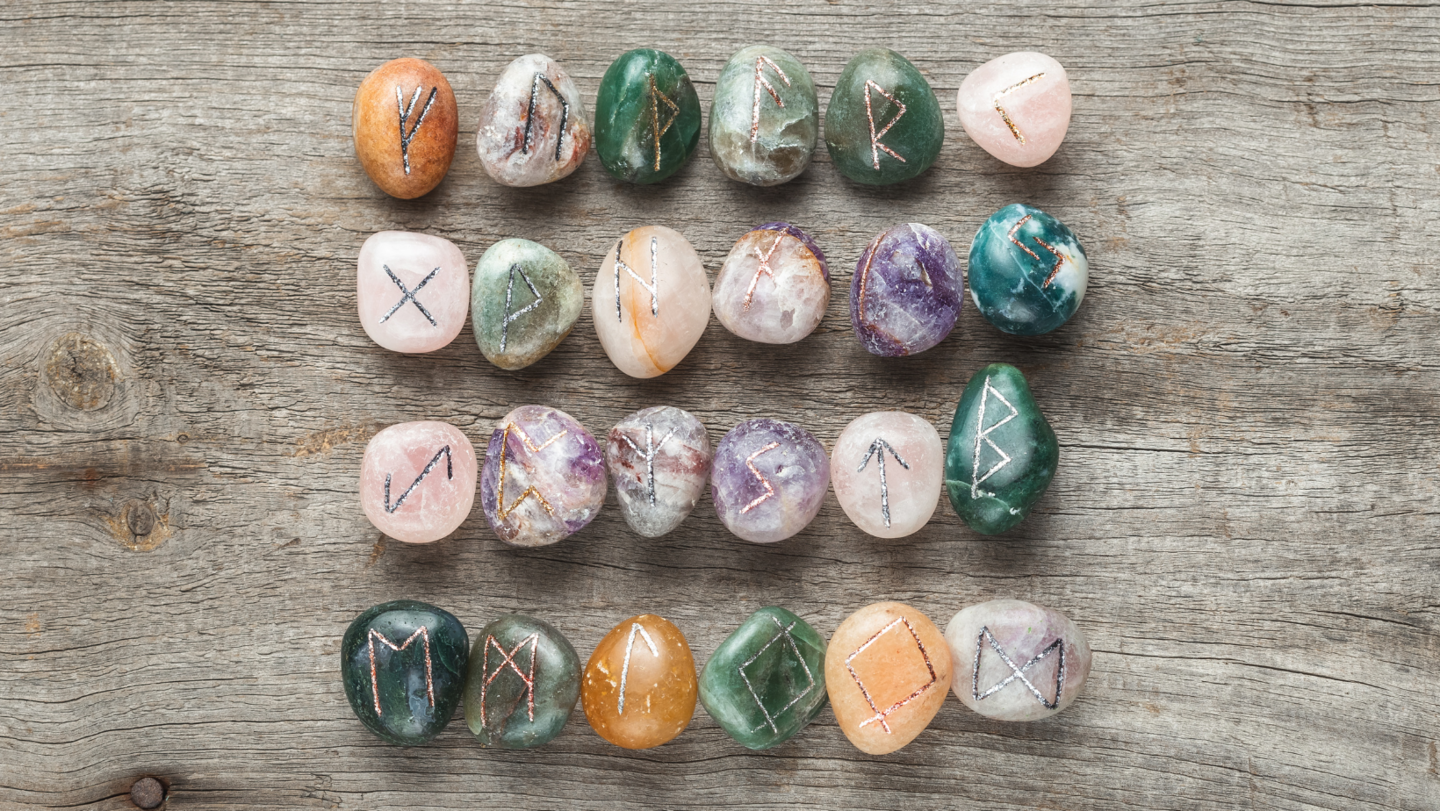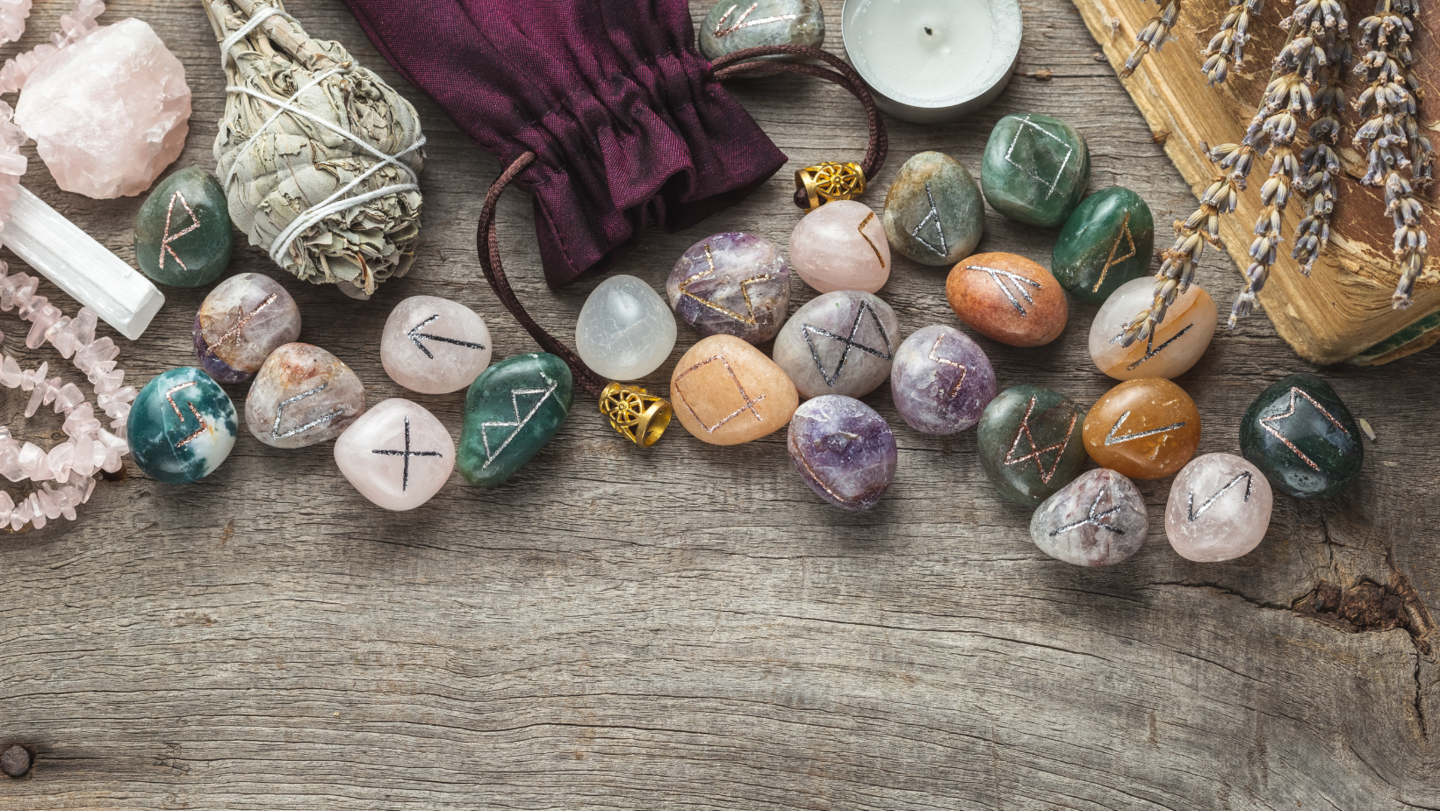Have you ever felt the allure of ancient mysteries? Ever been captivated by the cryptic symbols etched in time, whispering tales from a world long gone? Welcome to the enigmatic realm of Elder Futhark runes.
This arcane script, carved onto stones and bones by our Norse ancestors, isn’t just historical graffiti. No – it’s more like an ancestral tweet! Each symbol holds profound meanings that echo through centuries.
Whether you’re drawn here out of curiosity or seeking spiritual guidance from these archaic sigils – get ready. This exploration will delve into Elder Futhark runes’ origins, unravel their intricate meanings within cultural contexts, and even decode some mystifying runic inscriptions.
The past has its way of speaking to us if we know how to listen. So lean in close… because today, we’re cracking open a window into history itself!
Table of Contents:
Table Of Contents:
- Understanding the Elder Futhark Runes
- The Historical Context of Elder Futhark Runes
- Interpreting Meanings in Elder Futhark Runes
- Elder Futhark Runes in Norse Mythology and Culture
- Decoding Runic Inscriptions
- Comparing Elder Futhark with Younger Futhark
- Modern Usage of Elder Futhark Runes
- FAQs in Relation to Elder Futhark Runes
- Conclusion
Understanding the Elder Futhark Runes

The Elder Futhark is an ancient runic alphabet used by Old Norse people, comprising 24 unique symbols known as runes.
Emanating from a time shrouded in mystery, these elder futhark runes offer us fascinating insights into the lives and beliefs of our ancestors.
Each rune has its own meaning and symbolic significance. For instance, one may symbolize protection, while another could represent victory or strength.
The Aettir of the Elder Futhark
In this intricate system of runic alphabets, we find that each rune belongs to one of three groups called ‘aettir.’ The division into these groups was not random but held significant spiritual importance for those who used them.
This concept might be similar to how modern card decks are divided into suits. Each suit holds different connotations and interpretations within divination practices – just like with aettir.
“Rune casting”, a form of divination using elder futhark runes, involved throwing marked stones or dice (perhaps even out of an intricately carved dice cup) onto a white cloth then interpreting their arrangement according to various factors including which group they belonged to.
Who knows? You might have been lucky enough to get Freyja’s Aett leading you towards love or prosperity.
Runic Alphabets: Symbols Written In Stone…And Wood And Bone…
Apart from being inscribed on stone monuments often referred to as stelae, elder futhark inscriptions were also found on personal items such as amulets and weapons, made from a variety of materials like bone, wood, or metal.
For example, imagine an ancient Viking carving the ‘Tiwaz’ rune (named after the Norse god Tyr) onto his sword to invoke victory in battle. Or perhaps using Birch tree bark for inscribing a love message – each word rune symbolizing deep emotions.
What’s even more fascinating is that elder futhark runic symbols weren’t just etched anywhere. During ceremonies, they were carefully inscribed into yew trees. The towering yews were greatly revered by many due to their association with Yggdrasil.
Key Takeaway:
Immerse yourself in the world of Elder Futhark runes, an ancient Norse alphabet brimming with rich symbolism. Each rune carries a unique meaning, such as protection or strength, and is part of a group known as ‘aettir,’ similar to suits in card decks. Used for divination practices like “rune casting,” these symbols were etched into stones or wood pieces to seek guidance from the gods.
The Historical Context of Elder Futhark Runes

Peering into the ancient world, we encounter a fascinating writing system: the Elder Futhark runes. The earliest form of runic alphabets was popular among Old Norse and Germanic peoples from the second to eighth centuries CE.
Transition from Elder to Younger Futhark
Elder Futhark’s transition to Younger wasn’t random; it mirrored changes in society and language. By around 800 AD, a simplified version known as Younger Futhark emerged. It reflected alterations in Old Norse dialects that occurred over centuries.
In contrast with its elder sibling’s generous set of 24 symbols, Younger settled for just half—16 distinct characters only. However, each rune had more phonetic values than before, accommodating evolving linguistic patterns within limited graphical forms.
The new alphabet split into two variants: short-twig and long-branch runic letters – based on their visual characteristics rather than any profound semantic differences between them. The change marked an essential evolution in written communication among Nordic societies during those transformative times.
Fascinating Evolution through Time
This historical transformation holds significance beyond linguistics alone—it offers insights into social dynamics at play during this epochal shift from ancient Rome’s dominance towards Medieval Europe’s emerging power structures. Societal complexities are often interwoven with how languages develop—a testament seen clearly here.
Interpreting Meanings in Elder Futhark Runes

The meanings of the Elder Futhark runes can be complex, with each rune embodying a specific concept or deity. These symbols are more than just an ancient alphabet—they’re a gateway to understanding Norse culture and spirituality.
Varied Interpretations Across Cultures
Runic interpretations often differ from one culture to another due to varying historical contexts and religious beliefs. For example, while the rune “Tiwaz” is associated with God Tyr in Norse mythology—a symbol for justice and self-sacrifice—it might carry different connotations in other cultures.
The importance of context cannot be understated when deciphering runic inscriptions or interpreting elder futhark rune meanings. From invoking victory flags on battlefields to carving them onto dice cups during games, these runes were integral parts of daily life among ancient civilizations.
To illustrate further—let’s consider ‘Jera.’ This represents a year’s harvest cycle signifying prosperity, but it could also represent the cyclical nature of existence based on cultural perspective. Jera represents…
In some cases, the same rune may denote both physical objects like ‘yew tree’ or ‘wild ox,’ as well as abstract concepts such as overcoming obstacles (in the case of Tiwaz), which shows their versatile use across various aspects of life.
This versatility gives us insight into how our ancestors saw the world around them—their hopes, fears, and desires—all encapsulated in these mystical symbols.
While some runes like ‘Berkana’ are tied to natural elements, symbolizing the birch tree and fertility, others like ‘Ehwaz’ represent trust and cooperation, embodying the relationship between a horse and its rider. These meanings paint a vivid picture of how interconnected Norse people felt with nature.
Even in modern times, there’s a noticeable surge of interest.
Key Takeaway:
Each Elder Futhark rune is steeped in the ancient Norse culture and spirituality, acting as daily reminders of different concepts or gods. From victory flags to game pieces, these symbols were omnipresent. But keep in mind that their meanings can change depending on cultural context. Take ‘Jera’ for example. It could symbolize a harvest cycle or represent the cyclical nature of life.
Elder Futhark Runes in Norse Mythology and Culture

The Elder Futhark runes, the oldest form of runic alphabets used by Germanic peoples, hold a profound place in Norse mythology and culture. These ancient symbols were not just letters but powerful tools for divination, magic, and inscriptions on weapons or staves.
Runes in Divination and Magic
In their spiritual journey to connect with primal power or overcome obstacles, Old Norse people often turned to rune casting using dice cups made from yew trees – a symbol of the life-death-rebirth cycle. Each rune held distinct meanings, like ‘tiwaz’ representing God Tyr’s victory flag over adversities, while others stood for a wild ox (strength), birch tree (new beginnings), or even abstract concepts like good fortune.
Runic inscriptions carved into stones are believed to channel energies from the unconscious mind toward achieving desired outcomes. For instance, ‘nauthiz’ represents need, while ‘jera’ represents fruitful harvests after hard work. #
Influence on Modern Culture
These Elder Futhark runic scripts have transcended time to influence modern times, too. Their symbolism can be seen across popular media, including movies such as The Lord of the Rings, where Gandalf uses an Elder Futhark inscription spellbound onto his staff. #
Tattoo enthusiasts often etch these runic letters into their skin as reminders of personal beliefs – say ‘ehwaz’ that represents trusty companionship akin to a horse & rider relationship. # Also, who can forget the famous Led Zeppelin album cover with symbols representing band members – Jimmy Page’s ‘Zoso’ being a stylized version of the ‘dagaz’ rune symbolizing awakening at dawn.
These Elder Futhark runes are more than just ancient artifacts. They’re living reminders of our shared human history and spirituality that continue to resonate in modern culture.
Key Takeaway:
Steeped in Norse mythology and culture, Elder Futhark runes were not merely alphabets but powerful divination tools and magic symbols. Old Norse people used them for everything from inscribing weapons to rune casting with yew tree dice cups. Each rune held distinct meanings, like ‘tiwaz,’ which symbolized victory, or ‘jera,’ a representation of hard-earned success.
Decoding Runic Inscriptions

The mystery of the Elder Futhark runes, found in various inscriptions and artifacts, is a captivating subject. As you delve into the world of runic letters and inscriptions, each rune’s unique character emerges.
Begin your exploration of the Elder Futhark runes with foundational knowledge. Runes represent different aspects or elements. For instance, ‘isa’ represents water – essential for life but also potentially destructive if not respected.
Similarly, other runes symbolize intriguing concepts. The god Tyr links to tiwaz; this signifies justice and sacrifice, while the victory flag ties to futhark rune meanings associated with triumphs over overcoming obstacles.
Elder Futhark Runes: Artifacts & Inscriptions
Ancient artifacts, including dice cups, often bear these mystical symbols. These pieces provide invaluable insights into how our ancestors lived their lives thousands of years ago, during the 1st century CE. Egil’s Saga, an ancient Icelandic saga, narrates tales about using elder futhark runes carved on drinking horns as part of a riddle contest.
Modern archaeologists use tools like single rune deciphering techniques to interpret what was written long ago by ancient civilizations using runic alphabets. Nauthiz represents need, a primal power inherent in humanity, which showcases that even back then, they faced challenges just like us today. It adds another layer to how we perceive social order within these societies from centuries past.
Runic Writing: A Window Into The Past
Beyond simply decoding characters, though, rune casting involves delving deeper into spiritual enlightenment practices prevalent among ancients. Jera represents harvest time, signifying good fortune whilst dagaz represents dawn, symbolizing awakening. So you see, it’s not just about the runic writing but also what these runes connect us to in terms of understanding our shared human history.
The spiritual journey represented by Elder Futhark inscriptions on yew tree bark or birch tree slabs extends beyond simple linguistic interpretation. Egil’s Saga further tells tales of rune magic used for overcoming obstacles – a testament to the depth and breadth of this ancient practice.
Key Takeaway:
Dive into the world of Elder Futhark runes to unlock secrets from centuries past. Each rune, like ‘isa’ for water or ‘tiwaz’ for justice, tells a story about ancient Norse society and its beliefs. Uncover how artifacts with these symbols shed light on our ancestors’ lives and the challenges they faced, similar to ours today.
Comparing Elder Futhark with Younger Futhark
The journey from the Elder Futhark runes to their younger counterparts is like watching a wild ox transform into a sleek deer. Both hold power and beauty, but they serve different purposes in different landscapes.
Differences in Rune Count and Groupings
The primary difference between these two ancient runic alphabets lies in their count and groupings. The Elder Futhark, akin to an old yew tree, has deep roots with 24 intricate runes divided into three groups known as ‘aettir.’ Think of it as rolling dice; each roll (or rune) can unveil new layers of meaning.
In contrast, the Younger Futhark evolved over time, like leaves on a birch tree changing through seasons. It streamlined down to 16 efficient symbols divided into two groups. This change wasn’t just for aesthetics or simplicity – it reflected shifts within Norse society itself during its use from the 9th century CE onward.
If we were looking at this transformation under victory flags fluttering overhead, we’d see that even though there are fewer symbols in Younger Futhark’s arsenal, it doesn’t mean it was less powerful or effective than its predecessor.
Runic letters aren’t just artistic doodles – they’re snapshots of history etched onto stones or bones, capturing both ordinary life events and mystical beliefs alike. Each word rune carries weighty meanings influenced by elements such as the god Tyr’s courage when overcoming obstacles.
Rune casting, which involved interpreting inscriptions written using these alphabets, was a popular practice in ancient times. Whether you’re deciphering an inscription on a relic or drawing runes from a bag for divination, understanding these systems is like embarking on a spiritual journey into the heart of Norse culture.
in a relationship between a horse and its rider. Each rune carries profound meaning, acting as a guiding symbol for those who study them.
Key Takeaway:
The Younger Futhark runes symbols are a lesson in minimalism, showing us that sometimes less is indeed more. This simplicity allows for deeper understanding and ease of interpretation – much like how a clear path helps us navigate through the densest forests.
Modern Usage of Elder Futhark Runes
The fascinating world of the Elder Futhark runes has not been left behind in history. Instead, it has found a vibrant life in our modern times.
In today’s pop culture scene, you will find these ancient symbols appearing everywhere, from blockbuster movies to intricate tattoo designs. The captivating blend of historical richness and symbolic depth makes them irresistible to creative minds.
Movies and TV Shows: Embracing Ancient Symbolism
Think about your favorite fantasy series or movie franchise – chances are high that they have incorporated some form of runic writing into their lore. Hollywood filmmakers often use the mystique associated with these Elder Futhark inscriptions to create an air of authenticity around their fictional universes.
This helps viewers feel like they are peering into another realm or era, adding more depth to their viewing experience. You can spot this trend across various genres, particularly in films dealing with magic or mythology, such as “The Lord Of The Rings” trilogy and the “Thor” Marvel superhero movies.
Tattoos: Wearing History on Your Skin
Away from screens, big and small, Elder Futhark runes have made quite an impact on body art enthusiasts worldwide. Many people get tattoos featuring individual runes for personal significance based on traditional meanings; others opt for longer phrases written out using this ancient script.
An example is the ‘victory flag’ (Tiwaz ŭ), which represents overcoming obstacles through strength and determination – a popular choice among those embarking on new chapters in life. Another common rune is the ‘yew tree’ (Eihwaz), symbolizing endurance and protection against evil forces. (source)
Board Games: Rolling the Runes
The allure of Elder Futhark runes has also extended to tabletop gaming. Dice cup games featuring these ancient symbols offer a unique twist on traditional gameplay mechanics.
turn. This ancient language becomes a tool for victory, fueling strategic moves in the game.
Key Takeaway:
Modern pop culture has embraced the Elder Futhark runes, breathing life into these ancient symbols. They add depth and authenticity to fantasy films, give personal significance to tattoos, and offer a unique twist to board games. The allure of their historical richness keeps them alive and relevant today.
FAQs in Relation to Elder Futhark Runes
Did Vikings use Elder or Younger Futhark?
Vikings primarily used the Younger Futhark, a streamlined version of the earlier Elder Futhark.
What do the runes in the Elder Futhark mean?
The runes in Elder Futhark each carry specific meanings tied to concepts, deities, or elements within ancient Norse culture.
What is the Norse rune for order?
The Tiwaz rune represents Tyr, who’s associated with law and order in Norse mythology.
What is V in Elder Futhark runes?
In Elder Futhark, ‘V’ corresponds to the Ehwaz rune, which symbolizes horses and transportation.
Conclusion
Delving into the world of Elder Futhark runes has been a journey, hasn’t it?
We’ve walked through ancient Norse history and deciphered cryptic symbols. We’ve felt the primal power these runic alphabets hold.
We’ve seen how they shaped social order and spiritual journeys in their time and even today!
The shift from Elder to Younger Futhark? That’s all part of the tale, too – showing us that language is ever-evolving.
Remember, each rune isn’t just a symbol; it represents profound concepts or deities. And yet… interpretation can vary across cultures.
Fascinating, right? This mystical realm keeps giving!
Speaking of the mystical realm, check out a Japanese mythical creature called the Tsuchinoko next!

